Dedicated UV imaging kit is often really expensive. Small production runs and exotic materials such as quartz and calcium fluoride for the optical components tend to push costs way up. However not everything is prohibitively expensive, and the UV experience can be had for relatively little outlay is you shop smartly. So I present the Lomo UV 10x 0.2 microscope objective.
This little objective has an RMS thread, and is for finite tube microscopes. I found one on eBay and including delivery is was less than 100USD. Here’s the objective.
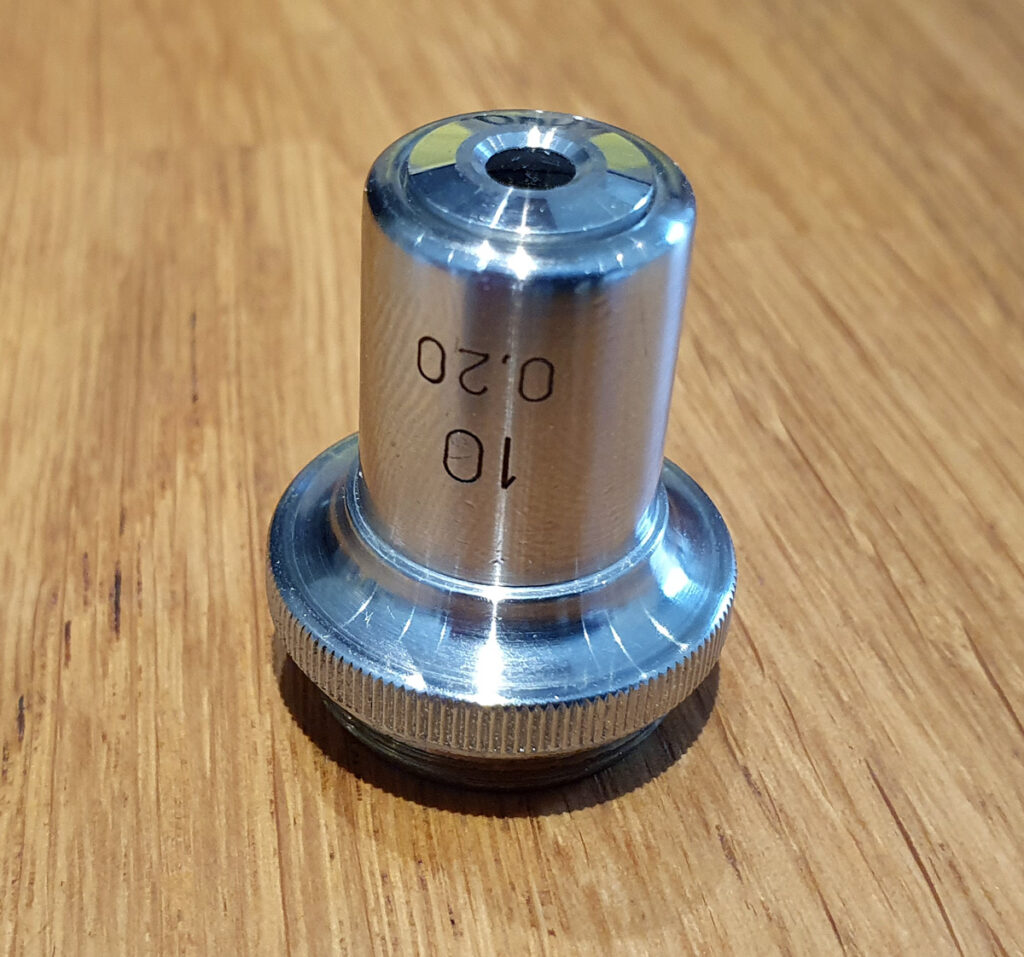
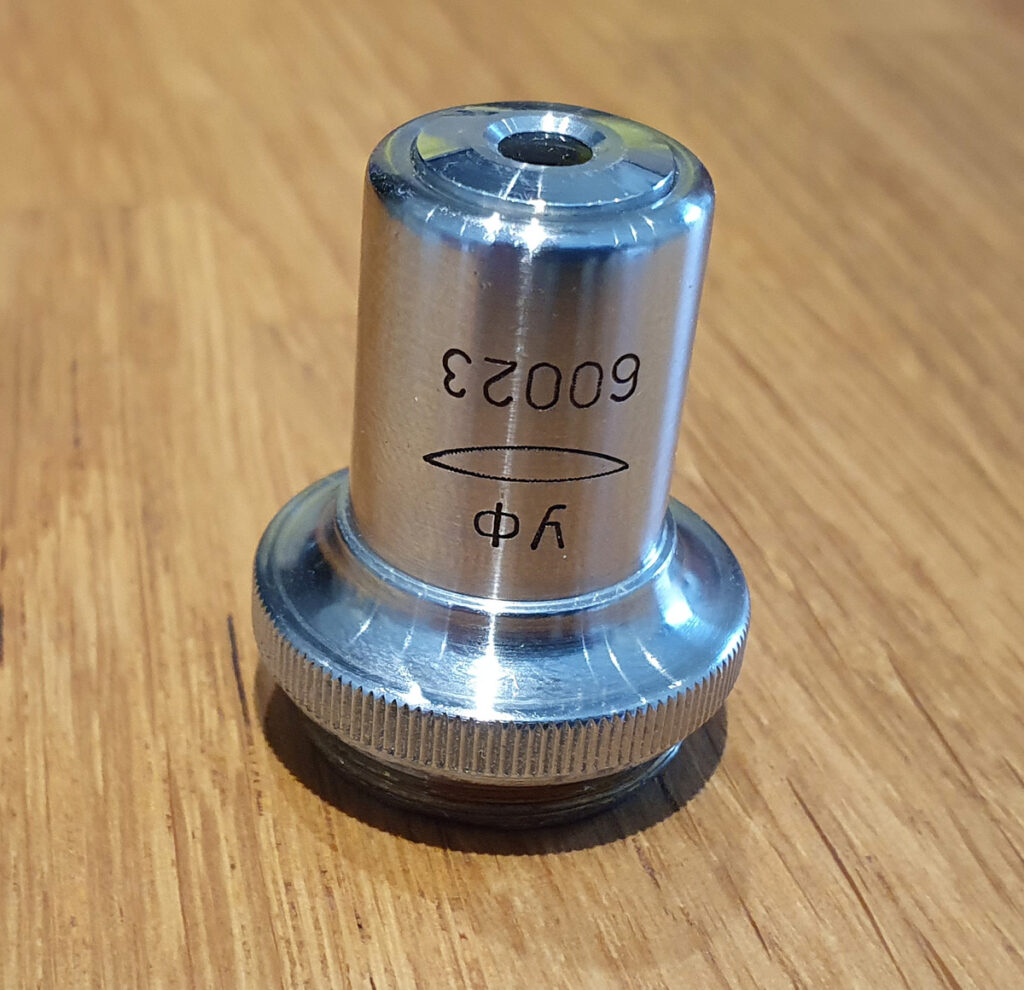
This Lomo objective lens is tiny. Here it is next to my Olympus UVFL 10x.
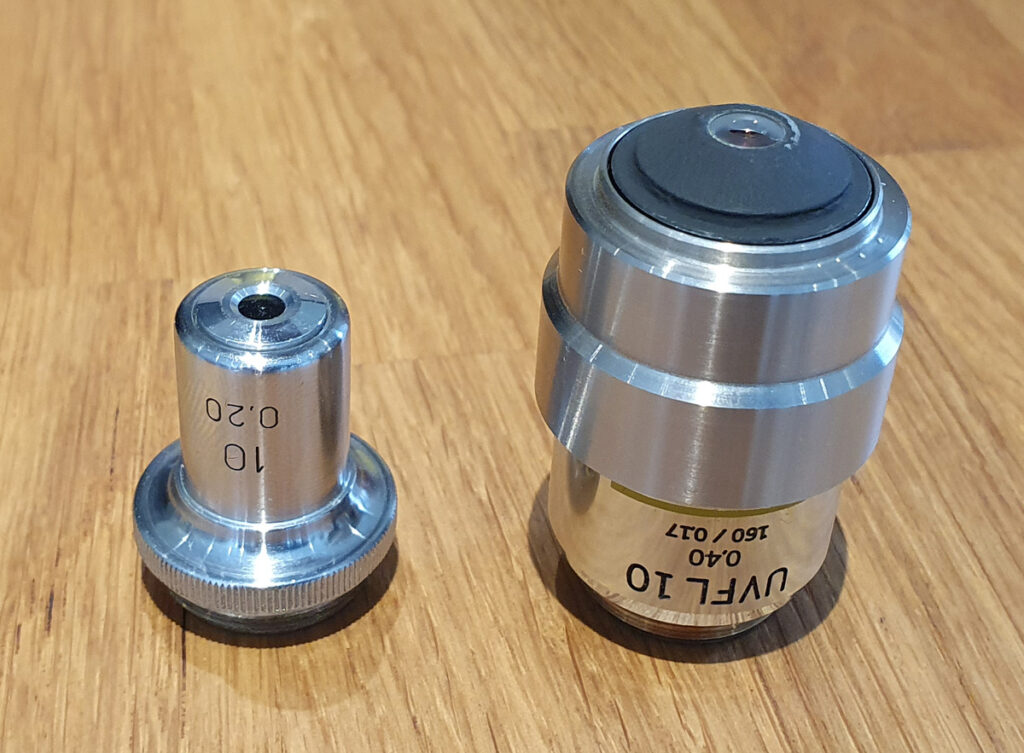
And here it is mounted on my Olympus BHB microscope.
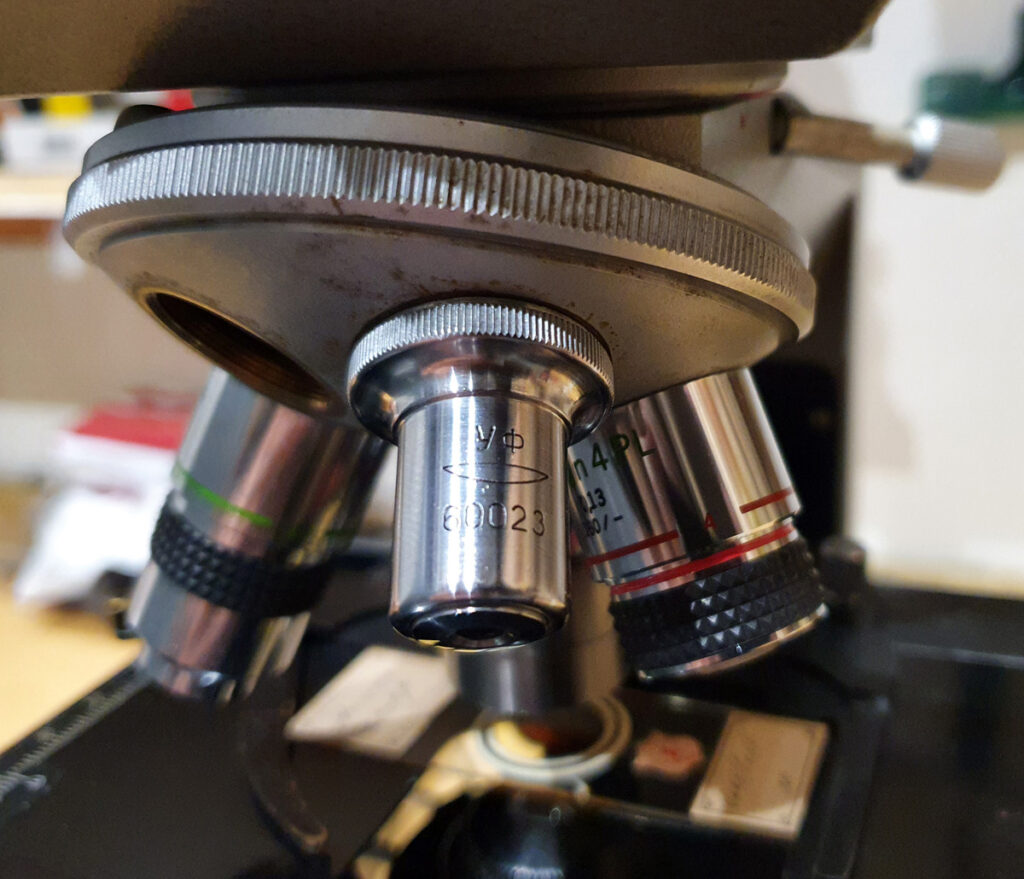
How does it perform? I think OK is about the best way to describe it. The lens shows some softness towards the edge of the image, as shown by the photo below of a skin sample with hair roots which was taken through the eyepiece of my Olympus.

Thing is these Lomo objectives were meant to be corrected by using the right Lomo eyepiece. Thankfully I have a Lomo UV correcting photoeyepiece for this objective, so images taken the right way through the trinocular should be a lot sharper across the image…..
So far what do we have? A little lens with a OK (but not stellar) performance. However this is where the Lomo plays its Joker – its transmission in the UV. I measured the lens transmission between 280nm and 420nm and got this.
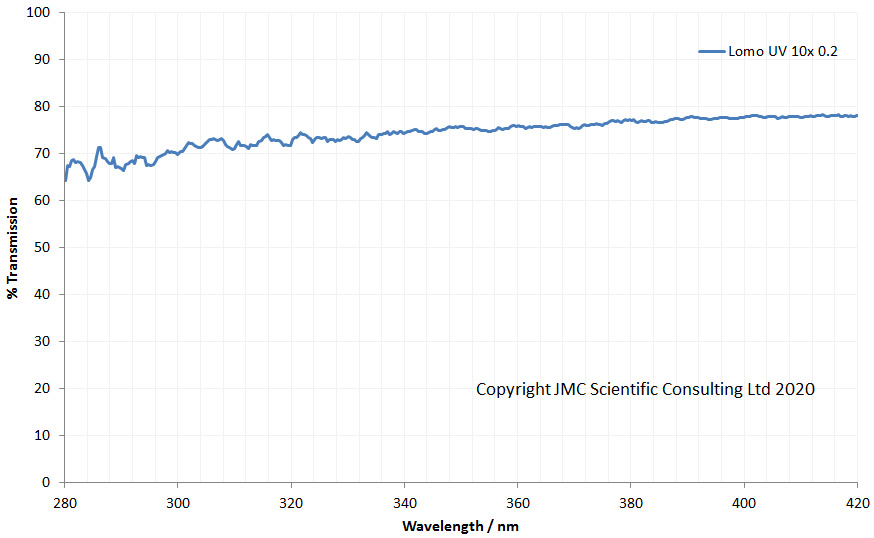
The transmission curve for the objective shows that it is not a normal glass lens. This is behaving like my Leitz UV and Zeiss Ultrafluar objective lenses, and is made from quartz instead of glass. Although I cannot measure below 280nm with my setup, I reckon this will have good transmission down to below 250nm. As such it is suitable for UVB and even UVC microscopy.
Good things come in small packages as they say, and that is certainly true with this little Lomo. This tiny little objective is a very cost effective way to try out the world of UV microscopy, offering great transmission far down in to the UV region, and I’ll definitely be using this in my UV microscope project. If you want to know more about this or any other aspect of my work you can reach me here.
